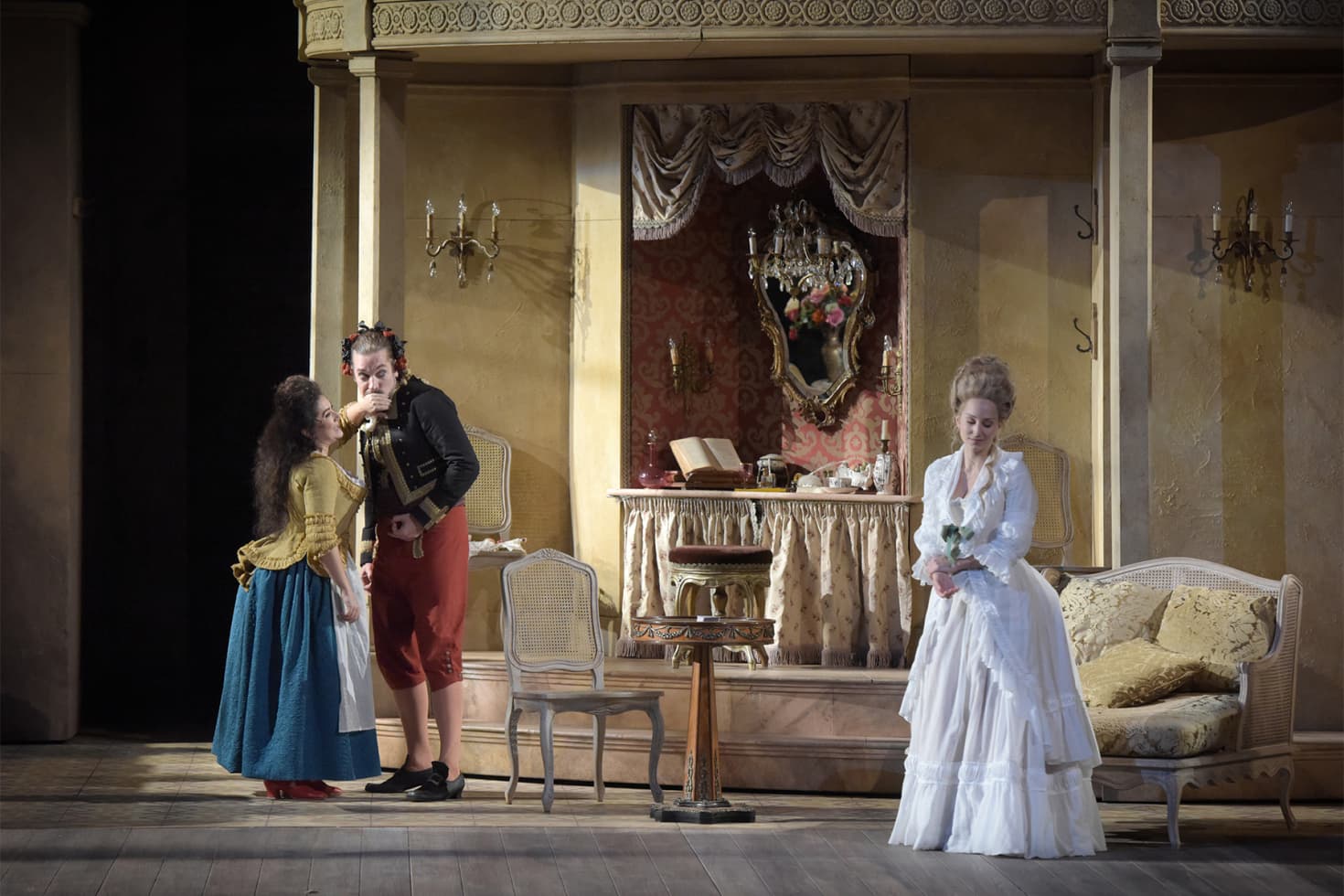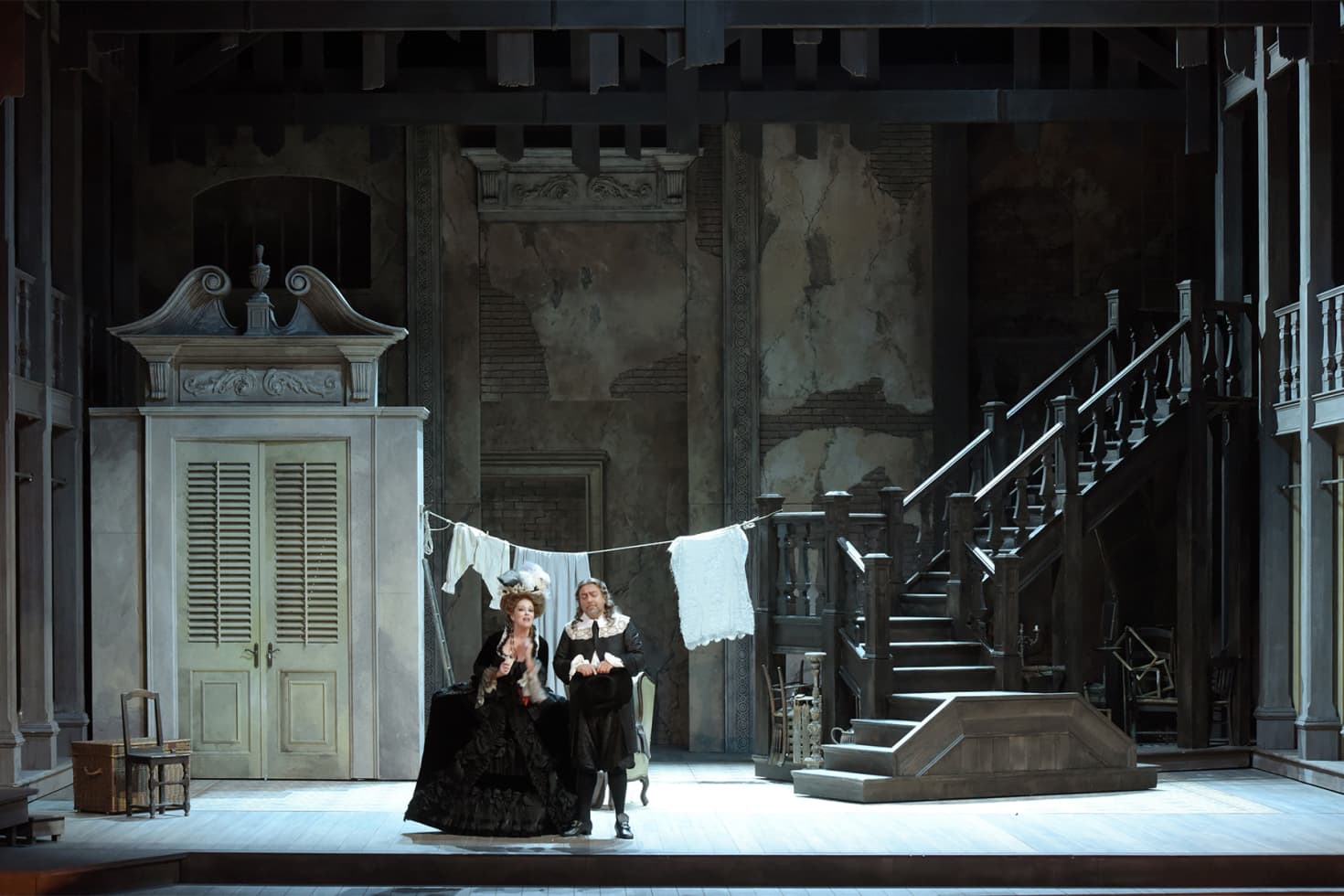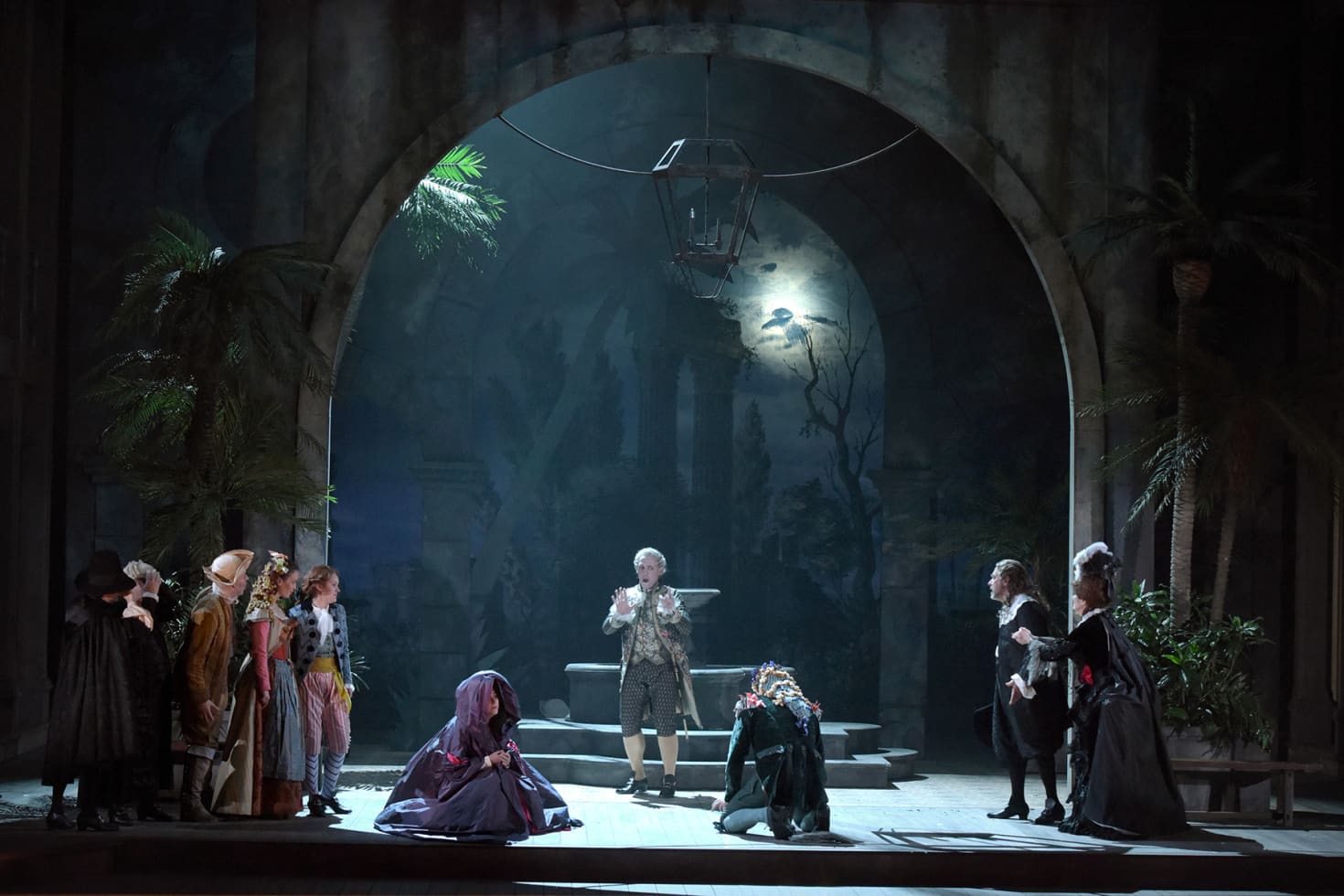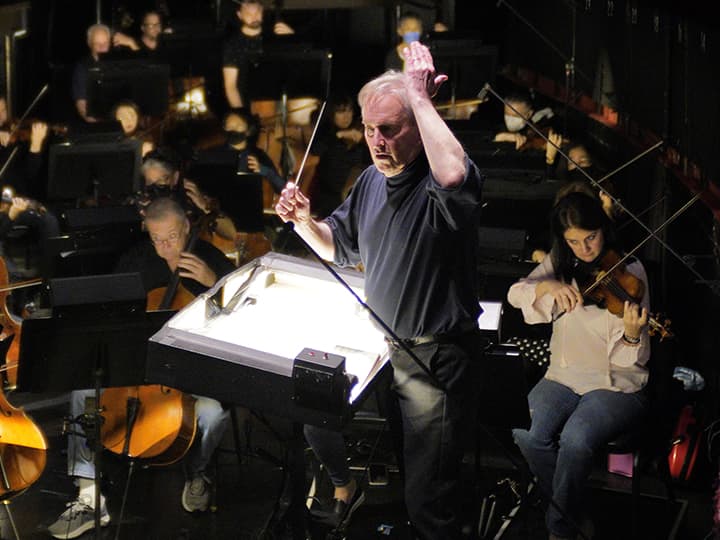The Marriage of Figaro: A Note from Music Director James Conlon
Originally published on March 21, 2015; revised June 19, 2020
“Come lo sono i moderni mariti: per sistema infideli, per genio capricciosi e per orgoglio, poi tutti gelosi.” (“That’s the way it is with modern husbands: unfaithful on principle, capricious by nature and out of pride, jealous.”)
So speaks Rosina (now the Countess) about her husband Count Almaviva (a name that means “Lively Soul”).
The Marriage of Figaro (1784), the second play in the Figaro trilogy by Pierre-Augustin Caron de Beaumarchais, and its operatic adaptation by Wolfgang Amadeus Mozart (1786) stand as two masterworks of their respective genres. They can be analyzed from a host of perspectives, none of which can fully plumb their depths. I propose, in this article, to look at these works from the perspective of class struggle (master and servant, aristocracy and working class), pertinent to the Age of Enlightenment and the battle of the sexes, germane to all times and ages. The first holds that there is an inescapable tension between rulers and the ruled, and the second that the confrontational magnetism between the sexes both drives the species, society and personal relations forward and, at the same time, holds them in an unending gridlock for dominance.
The Barber of Seville, the first of the trilogy, is pure comedy. The Marriage of Figaro is a more sophisticated nuanced comedy of manners that charts marriage’s bumpy road from feudalism to bourgeois liberalism, with the action taking place in one day (La Folle Journée, "The Crazy Day," being the work’s subtitle). The final work is no comedy at all. La Mère coupable (“The Guilty Mother”), which has thus far eluded a universally convincing operatic adaptation with a straightforward treatment of its plot, is a melodrama (one of, if not the first in classical theater). And, consequently, it is the only play of the three featuring a truly evil character. All the works are, to a degree, autobiographical. But their substance and influence are universal.

Photo Credit: Vincent Pontent
The plot of The Marriage of Figaro revolves around the practice, use and abuse of the feudal droit du seigneur (also referred to as jus primae noctis, right of the first night), the right of the lord of the manor to sleep with any woman in his domain on the night of her wedding or to demand a monetary or material recompense to waive his prerogative. This term, drawn most immediately from a comedy by Voltaire (Le Droit du Seigneur, 1762) and included in his Dictionnaire philosophique, was never codified into law. Although its very existence is debated, it may have been practiced in a multiplicity of unspecified forms. Simply put, privileged men took advantage of “unprivileged” women. This practice stands at the spoke of the whirling wheel of La Folle Journée as it is emblematic of class struggle in the Ancien Régime and the more universal Battle of the Sexes.
First, class struggle. On the eve of the French Revolution, The Marriage of Figaro sets out a competition for power between the aristocratic Count Almaviva and his valet Figaro. The playing field is, of course, not equal; it is defined by rigid class distinction. But the game of one-upmanship between these men, locked in a lifelong co-dependent relationship, affords the servant a chance to beat his master on his own terms. Mozart exhibits his idea of a more just society, one that doesn’t yet exist. It will be a better one where the individual will not be ruled by despots, but will relate to other self-governing and (hopefully) morally edified persons inspired by Age of Enlightenment principles. The distance between men is not to be measured by birthrights, but by their essence.
The relationship between the Countess and her servant Susanna is theoretically just as formal. But in fact, the women are far more enlightened—as they usually are in Mozart’s operas—and relate to each other as if in a world of equals.
The Battle of the Sexes is the other, more powerful dynamo behind the plot’s churning wheel. Here the struggle for dominance does not factor in rank. The Count tries—and fails—to make his wife, her servant and even the daughter of the drunken gardener bend to his will. The women all employ their intelligence and charms to maneuver around the men. Figaro, eternally outfoxing the world, is finally outwitted himself by his future wife Susanna, whose name—drawn from the Book of Daniel—identifies her as a model of chastity and fidelity.

Photo Credit: Vincent Pontent
Mozart is a clear champion of women, fidelity and the institution of marriage. They are portrayed as humanly and morally more evolved than the men. The Countess’ act of forgiveness towards the Count touches on the divine. Mozart, in a 1778 letter, after rejecting the practice and obligation of economically or politically advantageous marriages, wrote: “But we humble people can only choose a wife whom we love and who loves us…because we are neither noble nor highly born, nor aristocratic, nor rich.” (For more, see Nicholas Till’s Mozart and the Enlightenment).
Importantly, this is not just Figaro’s marriage but Susanna’s as well. Their union represents Mozart’s view of the reciprocity of loving vows and the right of individuals to choose their mates. This was only gradually to emerge in history, but the composer’s convictions are evident, as he will definitively demonstrate in The Magic Flute.
None of this is to suggest that Mozart’s characters are angels or one-dimensional. Part of his genius resided in his ability to portray human beings with all their imperfections, and to accept them as they are, and to bind them all together in a harmonious cosmos. And yet in none of the three Da Ponte operas (The Marriage of Figaro, Così fan tutte, Don Giovanni) are we left with the impression that all will live happily ever after. He is able to make us feel that the universe is in order despite the possibility (perhaps probability) that he an Da Ponte subtly raise, that their characters, their behavior, and their circumstances may not change much in the future. They likely will continue to live, love and operate in the same manner that they have demonstrated in the course of the operas.
Cherubino is at the vortex of the Battle of the Sexes. Mozart and Da Ponte’s choice to assign his role to a woman (as did Beaumarchais in the original play) have feminized him. He exhibits all of the future characteristics of a rake: a budding Almaviva at best, a Don Giovanni at worst. His future liaison with the Countess is hinted at in Act Two, prescient on Mozart’s part because that story will only be told in Beaumarchais' La Mère coupable, written after the composer’s death.

Photo Credit: Vincent Pontent
The Countess bemoans the infidelity of the Count, but successively schemes to teach him a (probably short-lived) lesson and then forgives him. Susanna claims her right to marry Figaro without surrendering her virtue the Count. Marcellina, discovering that Figaro is her long-lost son, withdraws her petition to marry him, and turns around to identify Doctor Bartolo as the father and to claim him for a husband. Even young Barbarina manages to cajole the Count not to banish Cherubino.
The jealous Count, feeling the entitlement that the Ancien Régime accorded the aristocracy, arrogantly philanders and belittles all around him. Figaro resists the Count in almost all things but shows himself to be equally jealous until Susanna admonishes him. Cherubino, charming as he might be, floats from flower to flower, picking all at once. Bartolo is still pompous and Basilio, always intriguing, lives parasitically between the worlds of men and women, aristocrat and servant.
All of this reflects the culture the droit du seigneur, around which the crazy day swirls. The Marriage of Figaro conjures up the world of pre-revolutionary France. The aristocratic men—vain, capricious, and jealous of heir prerogatives—rule their political and domestic domains. The lawyers, doctors and servants are not much better. But the women, more evolved, bring sense and humanity into that world. The Ancien Régime still reigned in 1786, when Mozart introduced Figaro to Vienna. It was to unravel in France three year later and, gradually, over the next century, in the rest of the Western world.







